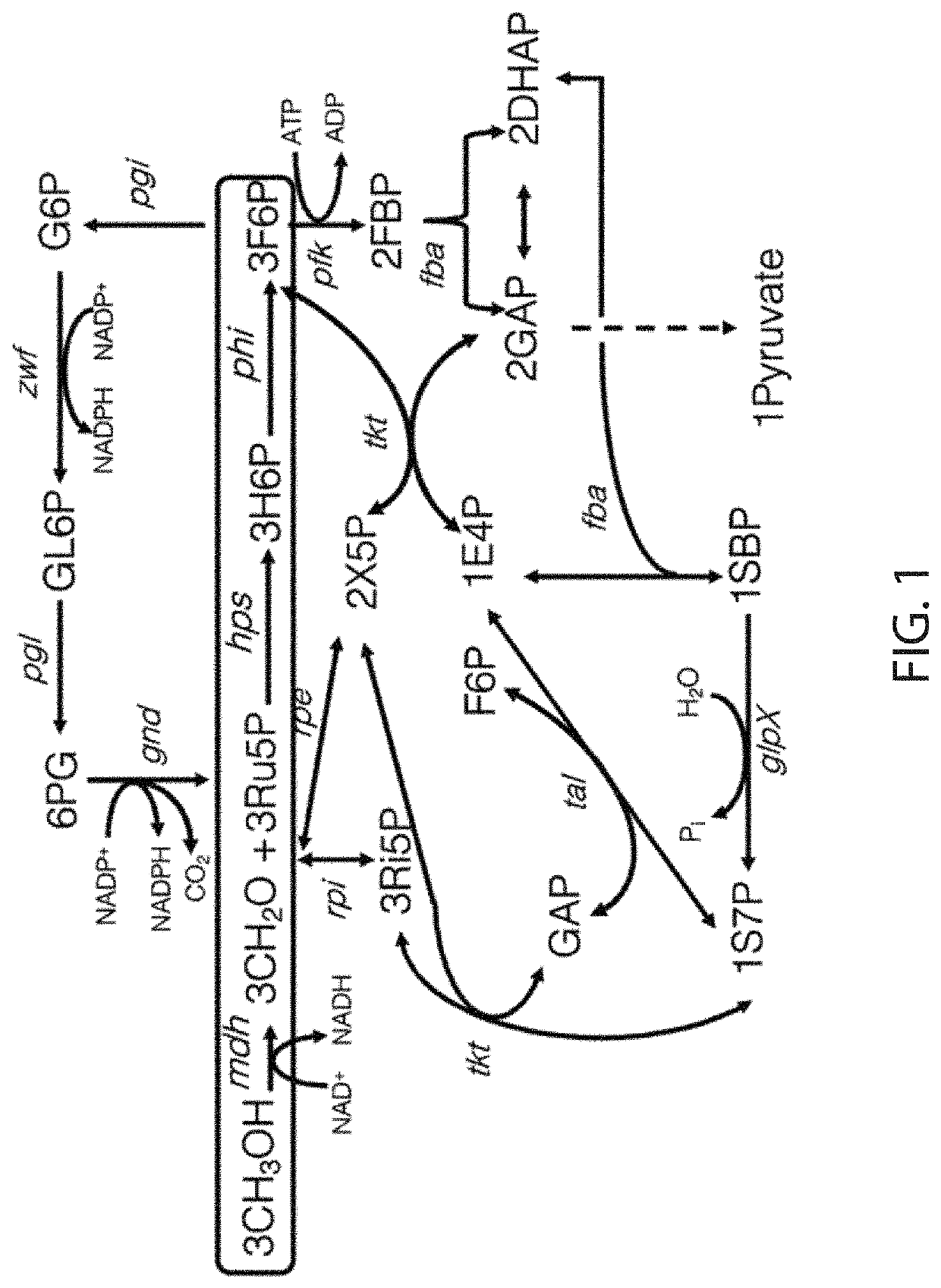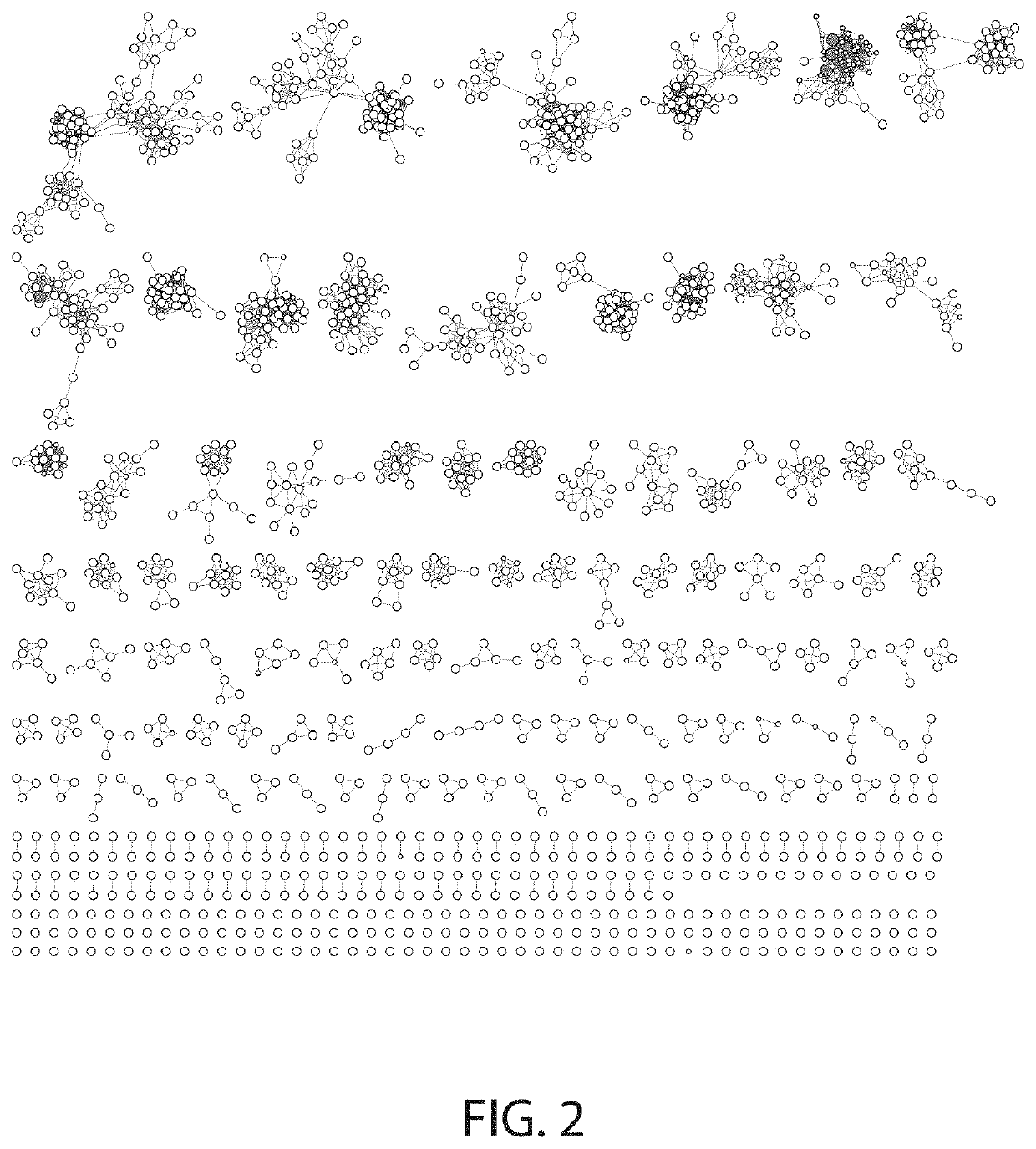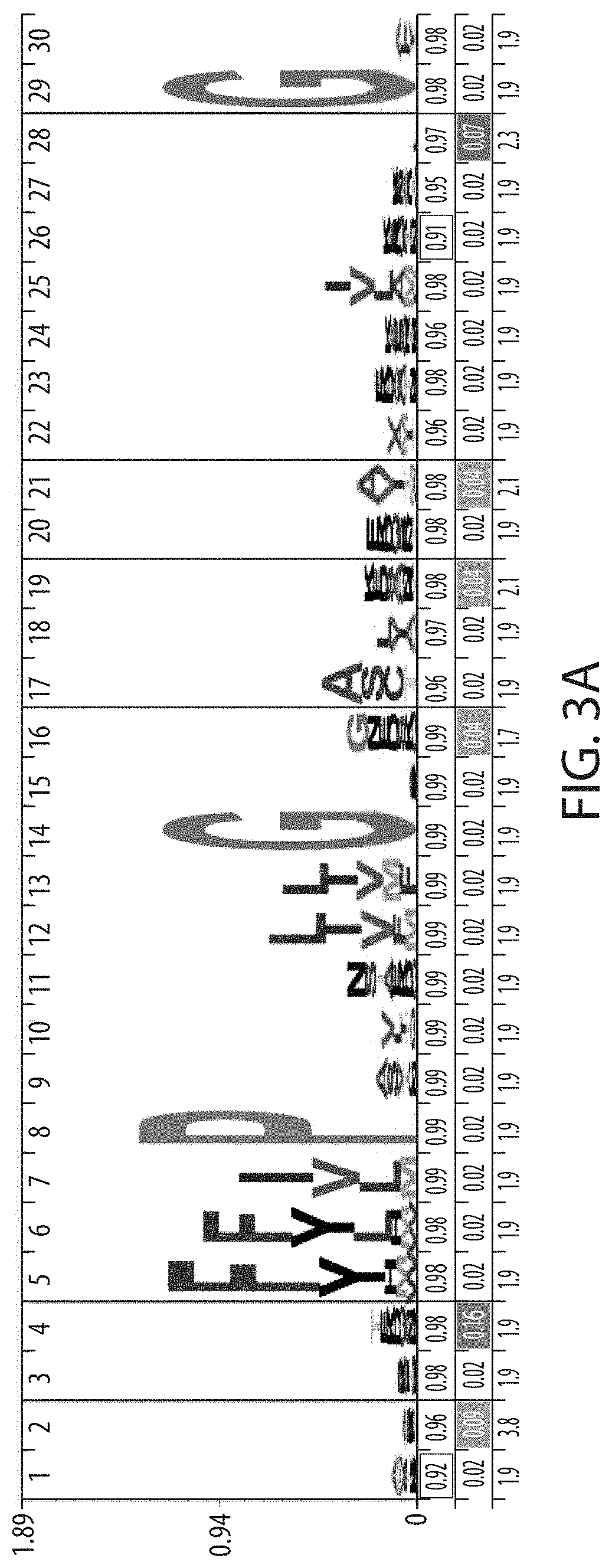Methanol utilization
a technology of methanol and methanol lysis, which is applied in the direction of lyase, carbon-carbon lyase, enzymology, etc., can solve the problems of limited use of methanol as a carbon source in industrial fermentation processes, and achieve the effect of improving the efficiency of methanol utilization
- Summary
- Abstract
- Description
- Claims
- Application Information
AI Technical Summary
Benefits of technology
Problems solved by technology
Method used
Image
Examples
example 1
ation and Characterization of Methanol Dehydrogenase (MDH) Enzymes
[0294]The present Example describes identification, development, and characterization of MDH enzymes. Those skilled in the art will appreciate that multiple sequences can encode the same polypeptide, and that codon optimization is often useful when expressing sequences in a particular host cell.
[0295]MDH Screening
[0296]To identify MDH enzymes, a total of 5640 genes of interest were identified using bioinformatics searching and 4173 were de novo synthesized (FIG. 2). Bioinformatics searching included using three “seed” MDH sequences from Ralstonia euthropha and Bacillus methanolicus (SEQ ID NOS: 29-31). Based on sequence similarity, the largest class of enzymes screened generically belong to the broad alcohol dehydrogenase family (EC 1.1.1.1). A set of 2426 genes encoding for proteins with varying amino acid similarity to alcohol and methanol dehydrogenases (ADH / MDH) were selected from public databases as wild-type pro...
example 2
ation and Characterization of 3-hexulose-6-phosphate Synthase (HPS), and 3-hexulose-6-phosphate Isomerase (PHI) Enzymes
[0303]HPS and PHI Screening
[0304]The present Example describes identification, development, and / or characterization of certain useful HPS and PHI polypeptides and / or sequences that encode them. Those skilled in the art will appreciate that multiple sequences can encode the same polypeptide, and that codon optimization is often useful when expressing sequences in a particular host cell.
[0305]Libraries of putative 3-hexulose-6-phosphate synthase (HPS), and 3-hexulose-6-phosphate isomerase (PHI) were constructed following a similar pipeline described above for ADH / MDH genes / enzymes. A total of 2004 candidate HPS and PHI enzymes (about half from each class) were identified using seed polypeptides (FIG. 11). A total of 1346 were synthesized as individually expressed genes in the inducible expression vector m416625. Additionally, 603 synthetic two-gene (candidate HPS and ...
example 3
nt of Recombinant Host Cells that are Capable of Using Methanol to Produce Lysine
[0308]This Example describes the development of recombinant host cells with increased lysine production.
[0309]Genes expressing a subset of the MDH, HPS and PHI enzymes (FIG. 17) and a library of regulatory parts (promoters, operators, mRNA stability cassettes, ribosomal binding sites and terminators; FIG. 16) were assembled in full factorial fashion into methanol assimilation pathways of the ribulose monophosphate type by de novo techniques, cloned into low copy number vectors and tested in an E. coli strain for assimilation of 13C-methanol into biomass and product. The E. coli strain includes a frmA gene knockout and does not naturally undergo methanol assimilation. The frmA gene encodes S-(hydroxymethyl)glutathione dehydrogenase.
[0310]836 pathways were synthesized out of the 1,152 targeted pathways. The pathway plasmids were transformed into the E. coli strain including a frmA gene knockout and tested...
PUM
| Property | Measurement | Unit |
|---|---|---|
| w/w | aaaaa | aaaaa |
| optical density | aaaaa | aaaaa |
| concentration | aaaaa | aaaaa |
Abstract
Description
Claims
Application Information
 Login to View More
Login to View More - R&D
- Intellectual Property
- Life Sciences
- Materials
- Tech Scout
- Unparalleled Data Quality
- Higher Quality Content
- 60% Fewer Hallucinations
Browse by: Latest US Patents, China's latest patents, Technical Efficacy Thesaurus, Application Domain, Technology Topic, Popular Technical Reports.
© 2025 PatSnap. All rights reserved.Legal|Privacy policy|Modern Slavery Act Transparency Statement|Sitemap|About US| Contact US: help@patsnap.com



